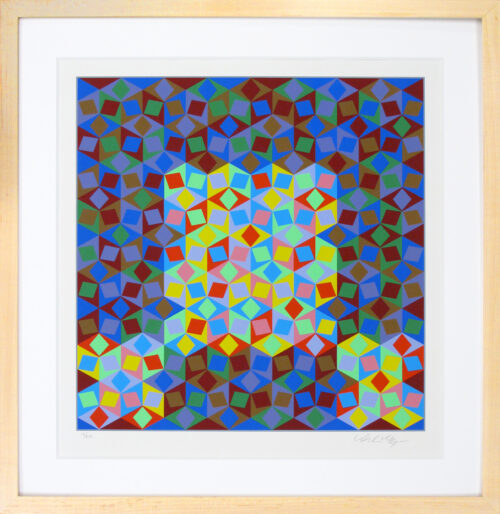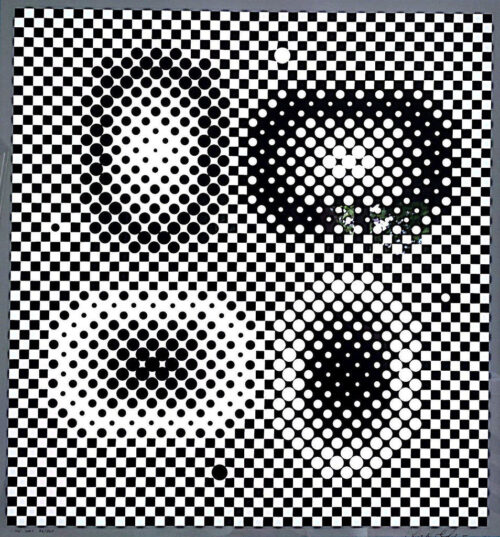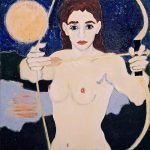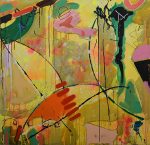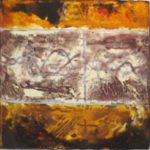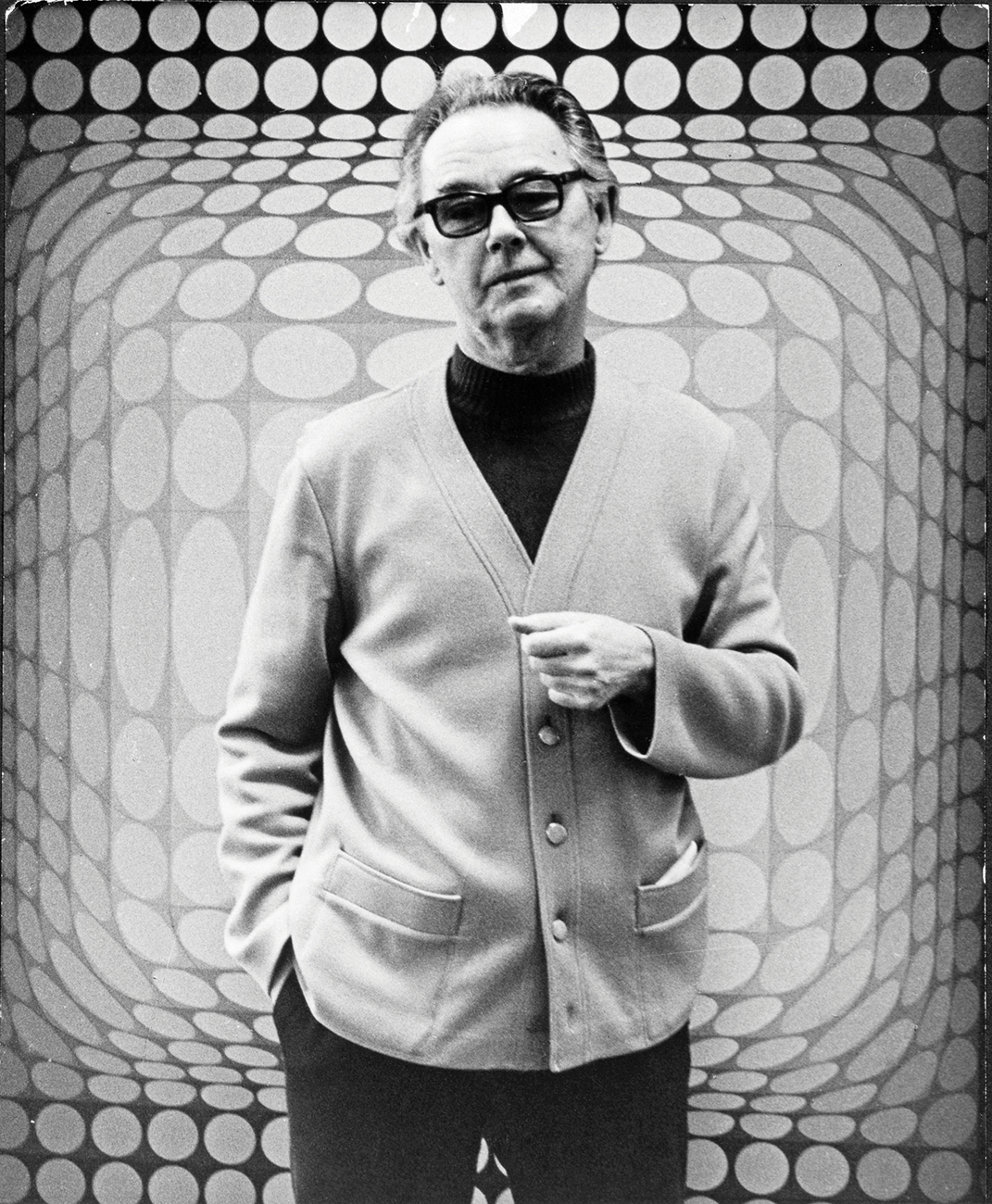
Victor Vasarely was a French-Hungarian artist credited as the father of the Op Art movement. Utilizing geometric shapes and colorful graphics, the artist created compelling illusions of spatial depth, as seen in his work Vega-Nor (1969). Vasarely’s method of painting borrowed from a range of influences, including Bauhaus design principles, Wassily Kandinsky, and Constructivism. Born Vasarhelvi Gyozo on April 9, 1906 in Pecs, Hungary, he briefly studied medicine at university, but at the Muhly Academy in Budapest, where the syllabus was largely based on Walter Gropius’s Bauhaus school in Germany. After settling in Paris in 1930, Vasarely worked as a graphic artist while creating many proto-Op Art works including Zebra (1937). The artist experimented in a style based in Surrealism and Abstract Expressionism during the 1940’s before arriving at his hallmark checkerboard works. Op Art went on to have a number of practitioners including Bridget Riley and Yaacov Agam. Vasarely died at the age of 90 in Paris, France.
Victor Vasarely is internationally recognized as one of the most important artists of the 20th century. Vasarely is the acknowledged leader of the Op Art movement, and his innovations in color and optical illusion have had a strong influence on many modern artists. In 1947, Vasarely discovered his plavve in the abstract art. Influenced by his experiences at Breton Beach of Belle Isle, he concluded that “internal geometry” could be seen below the surface of the entire world. He conceived that form and color are inseparable. “Every form is a base for color, every color is the attribute of a form.” Forms from nature were thus transposed into purely abstract elements in his paintings. Recognizing the inner geometry of nature, Vasarely wrote, “the ellipsoid form… will slowly, but tenaciously, take hold of the surface, and become its raison d’etre. Henceforth, this ovoid form will signify in all my works of this period, the ‘oceanic feeling’…. I can no longer admit an inner world and another, an outer world, apart. The within and the without communicate by osmosis, or, one might rather say: the spatial-material universe, energetic-living, feeling-thinking, form a whole, indivisible…. The language of the spirit are but the supervibrations of the great physical nature.” Vasarely’s works are presently held in the collections of the Albright-Knox Art Gallery, the Art Institute of Chicago, the Tate Gallery in London and the Peggy Guggenheim Collection in Venice.



